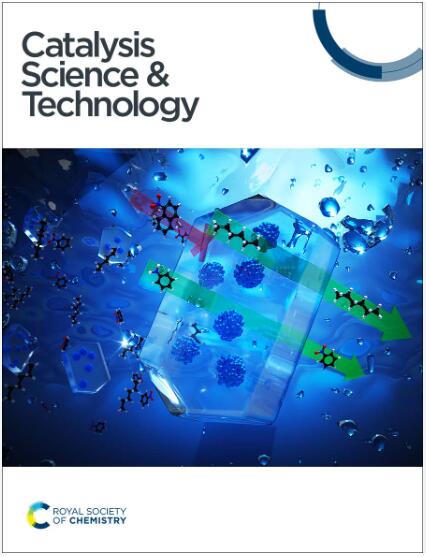一种高效的由mof衍生的钛磁铁矿水气逆向转换催化剂
IF 4.4
3区 化学
Q2 CHEMISTRY, PHYSICAL
引用次数: 0
摘要
为了应对不断升级的温室气体排放危机,将逆向水气转换(RWGS)反应与费托合成(FTS)相结合被认为是一种有前途的两步法,可将CO2和H2转化为有价值的产品。然而,在RWGS步骤中,需要高温来实现显著的CO2转化,以及在高压下形成不需要的产物(例如甲烷),这给RWGS反应与FTS合成的整合带来了挑战。在这种情况下,开发一种低温RWGS催化剂,即使在高压下也能抑制CO2甲烷化,对于促进两个过程之间的能量整合至关重要。在这项研究中,我们深入研究了金属有机骨架(MOF)衍生固体作为低温RWGS反应的催化剂。我们的催化剂表现出高活性和稳定性,在中等温度和高压下,在接近平衡的二氧化碳转化水平下,达到高达97%的CO选择性。对合成的钛磁铁矿催化剂进行了动力学研究,以确定描述催化体系的动力学参数,并为未来的反应器和工艺设计提供方便。本文章由计算机程序翻译,如有差异,请以英文原文为准。
An efficient titanomaghemite MOF-derived catalyst for reverse water–gas shift†
In response to the escalating greenhouse gas (GHG) emission crisis, integrating the reverse water–gas shift (RWGS) reaction with Fischer–Tropsch synthesis (FTS) has been identified as a promising two-step approach for converting CO2 and H2 into valuable products. However, the requirement for high temperatures to achieve significant CO2 conversion, along with the formation of undesired products (e.g., methane) at high pressures during the RWGS step, presents challenges for integrating the RWGS reaction with FTS synthesis. In this context, developing a low-temperature RWGS catalyst that can suppress CO2 methanation, even under high pressure, is paramount for facilitating energy integration between the two processes. In this study, we present an in-depth study of a metal–organic framework (MOF)-derived solid as a catalyst for the low temperature RWGS reaction. Our catalyst showed high activity and stability, achieving up to 97% CO selectivity at close to equilibrium CO2 conversion levels at moderate temperatures and high pressures. A kinetic study of the resulting titanomaghemite catalyst was conducted to determine the kinetic parameters that describe the catalytic system and to facilitate future reactor and process design.
求助全文
通过发布文献求助,成功后即可免费获取论文全文。
去求助
来源期刊

Catalysis Science & Technology
CHEMISTRY, PHYSICAL-
CiteScore
8.70
自引率
6.00%
发文量
587
审稿时长
1.5 months
期刊介绍:
A multidisciplinary journal focusing on cutting edge research across all fundamental science and technological aspects of catalysis.
Editor-in-chief: Bert Weckhuysen
Impact factor: 5.0
Time to first decision (peer reviewed only): 31 days
 求助内容:
求助内容: 应助结果提醒方式:
应助结果提醒方式:


